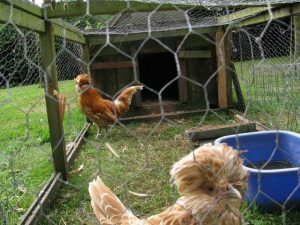The Washington State Department of Agriculture (WSDA) has activated a multi-agency response plan following the confirmation of highly pathogenic H5 avian influenza in domestic birds in Benton County. WSDA will work closely with the U.S. Department of Agriculture’s Animal Plant Health Inspection Service (USDA-APHIS) in this response.

There is no immediate public health concern due to the avian influenza virus detected. Avian influenza does not affect poultry meat or egg products, which remain safe to eat. As always, both wild and domestic poultry should be properly cooked.
The H5 avian influenza virus was confirmed by the Washington State University’s Washington Animal Disease Diagnostic Laboratory in Pullman. It was found in birds from a backyard poultry flock near Benton City. The flock of approximately 150 birds includes domestic waterfowl with access to the outdoors. There is also a pond on the premises frequented by migratory birds. The virus has not been found in commercial poultry anywhere in Washington or the United States.
The bird owner contacted WSDA after experiencing the loss of nearly 50 birds in the past week. The virus is similar to the virus found in a Washington captive gyrfalcon last month, although additional testing is being conducted to further identify the strain of the disease.
WSDA is advising commercial poultry growers and backyard flock owners to be vigilant with biosecurity measures and surveillance.
Related: Washington agriculture officials to hold town hall meeting on avian influenza
“We have a vigorous response plan but this development demonstrates how important good biosecurity can be, especially for backyard bird owners,” state veterinarian Dr. Joe Baker said. “We have not diagnosed the virus anywhere else in our domestic poultry population, but the presence of the virus in migratory waterfowl is a risk to backyard poultry. One step owners should take is preventing contact between their birds and wild birds.”


2 thoughts on “H5 bird flu detected in backyard poultry flock near Benton City, Washington”